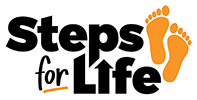Outsmarting the Imposters
We’ve all heard the phrase ‘knowledge is power’ and this is certainly true when it comes to our health and the foods that we choose to buy and eat.
Health halos are claims on food that make them seem healthier than they really are. It’s time to outsmart the manufacturers and to learn which foods really do have a healthy glow and which are just devils in disguise!
Let’s take a look at some common halos
Natural - These foods contain no artificial colors or additives, but they may still be full of sugar, sodium, and fat.
Low-Carb, Low-Fat or Trans-Fat Free - These labels mask the real issue: calories. These labels do not mean low calorie and excess calories are what ultimately lead to weight gain, regardless of whether they are from carbs, fat, trans-fat or protein.
Light/Lite - This can mean that a product has fewer calories, fat or sodium than the original version, or it may simply refer to flavor or colour (as it does with olive oil).
No Added Sugar - The product with this label may already be high in sugar, it doesn’t mean there is no sugar in the product.
Beware of ‘Guesstimating’
Part of the health halo effect is a tendency to eat more of a food that is seen as ‘guilt free’. Studies have found that consumers eating at a fast food restaurant perceived as “healthy”, such as Subway, were more likely to underestimate their calorie intake by an average of 151 calories than if the consumers were eating at a fast–food restaurant perceived as “unhealthy”, such as McDonald’s. Additionally, the research indicated that consumers were more likely to order sides, drinks, and desserts if their entrée was perceived to be healthier than if their entrée was less healthy. They found that the additional drinks, sides, and desserts contained up to 131% more calories for those eating healthy entrees.
Remember, it’s your choice and you have the power - good luck!

